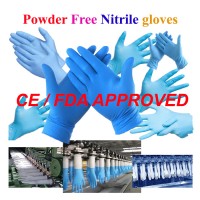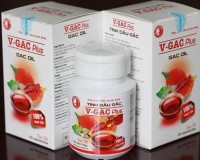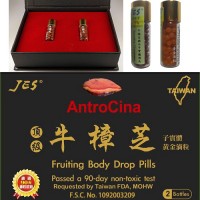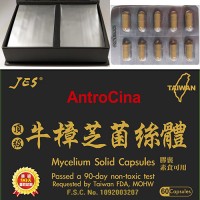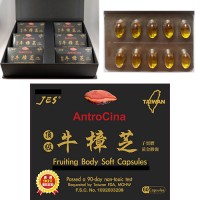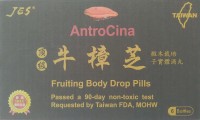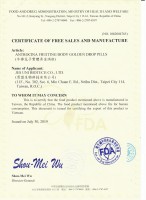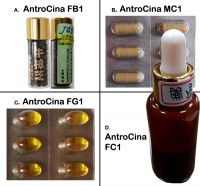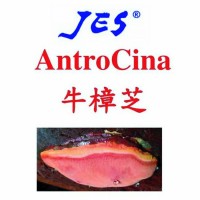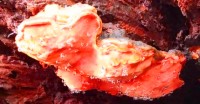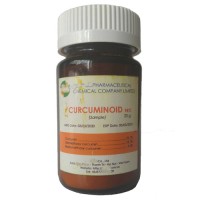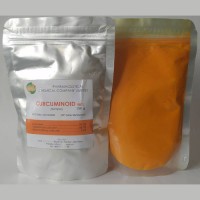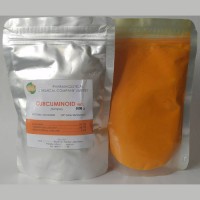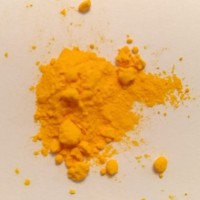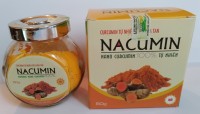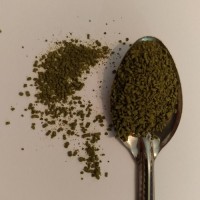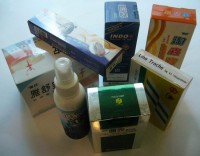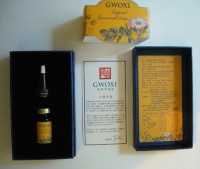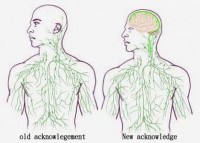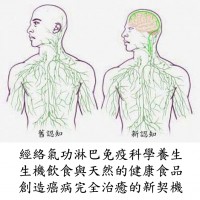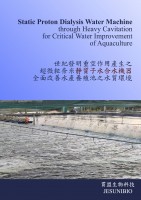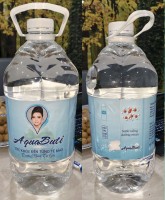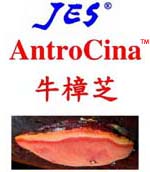international Journal of Nanomedicine study on Curcumin
《Product Content》:
國際奈米醫藥期刊(International Journal of Nanomedicine)參考文獻 奈米化薑黃的抗癌研究 Study of Curcumin nanoparticles for reference application in cancer.
A)
Liposomal curcumin and its application in cancer 脂質體薑黃素及其在腫瘤中的應用
Abstract: Curcumin (CUR) is a yellow polyphenolic compound derived from the plant turmeric. It is widely used to treat many types of diseases, including cancers such as those of lung, cervices, prostate, breast, bone and liver. However, its effectiveness has been limited due to poor aqueous solubility, low bioavailability and rapid metabolism and systemic elimination. To solve these problems, researchers have tried to explore novel drug delivery systems such as liposomes, solid dispersion, microemulsion, micelles, nanogels and dendrimers. Among these, liposomes have been the most extensively studied. Liposomal CUR formulation has greater growth inhibitory and pro-apoptotic effects on cancer cells. This review mainly focuses on the preparation of liposomes containing CUR and its use in cancer therapy.
摘要:薑黃素(CUR)是一種由植物薑黃衍生而來的黃色多酚化合物。 它被廣泛用於治療許多類型的疾病,包括癌症,如肺癌,子宮頸癌,前列腺癌,乳腺癌,骨癌和肝癌。 然而,由於水溶性差,生物利用度低,新陳代謝迅速和全數排泄出去,其有效性受到限制。 為了解決這些問題,研究人員嘗試探索新型藥物遞送系統,如脂質體,固體分散體,微乳液,膠束,奈米凝膠和樹狀大分子。 其中,脂質體已被廣泛研究。 脂質體薑黃素製劑對癌細胞具有更大的生長抑制和促凋亡作用。 本綜述主要集中在製備含薑黃素的脂質體及其在癌症治療中的應用。
B)
The effects of turmeric (curcumin) on tumor suppressor protein (p53) and estrogen receptor (ERα) in breast cancer cells薑黃(薑黃素)對乳腺癌細胞中抑癌蛋白(p53)和雌激素受體(ERα)的影響
Abstract: Curcumin (CUR) is a compound that has antibacterial, antiviral, anti-inflammatory, and anticancer properties. In this study, we have analyzed the effects of CUR on the expression of ERα and p53 in the presence of hormones and anti-hormones in breast cancer cells. Cells were cultured in a medium containing charcoal-stripped fetal bovine serum to deplete any endogenous steroids and treated with CUR at varying concentrations or in combination with hormones and anti-hormones. Protein analysis revealed a relative decrease in the levels of p53 and ERα upon treatment with 5–60 µM CUR. In cell proliferation studies, CUR alone caused a 10-fold decrease compared with the treatment with estrogen, which suggests its antiproliferative effects. Delineating the role of CUR in the regulation of p53, ERα, and their mechanisms of action may be important in understanding the influence of CUR on tumor suppressors and hormone receptors in breast cancer
摘要:薑黃素(CUR)是一種具有抗菌,抗病毒,抗炎和抗癌特性的化合物。 在本研究中,我們分析了乳腺癌細胞中激素和抗激素存在下薑黃素對ERα和p53表達的影響。 將細胞在含有活性炭胎牛血清的培養基中培養以消耗任何內源性類固醇並用不同濃度的薑黃素或與激素和抗激素組合處理。 蛋白質分析顯示用5-60μM薑黃素處理後p53和ERα水平相對降低。 在細胞增殖研究中,單獨薑黃素與雌激素治療相比降低了10倍,這表明其具有抗增殖作用。 闡明薑黃素在調控p53,ERα及其作用機制中的作用可能對了解薑黃素對乳腺癌中腫瘤抑制因子和激素受體的影響有重要意義
C)
Curcumin-coordinated nanoparticles with improved stability for reactive oxygen species-responsive drug delivery in lung cancer therapy薑黃素調配的奈米顆粒在肺癌治療中對活性氧反應藥物遞送具有改善的穩定性
Background: The natural compound curcumin (Cur) can regulate growth inhibition and apoptosis in various cancer cell lines, although its clinical applications are restricted by extreme water insolubility and instability. To overcome these hurdles, we fabricated a Cur-coordinated reactive oxygen species (ROS)-responsive nanoparticle using the interaction between boronic acid and Cur.
Materials and methods: We synthesized a highly biocompatible 4-(hydroxymethyl) phenylboronic acid (HPBA)-modified poly(ethylene glycol) (PEG)-grafted poly(acrylic acid) polymer (PPH) and fabricated a Cur-coordinated ROS-responsive nanoparticle (denoted by PPHC) based on the interaction between boronic acid and Cur. The mean diameter of the Cur-coordinated PPHC nanoparticle was 163.8 nm and its zeta potential was –0.31 mV. The Cur-coordinated PPHC nanoparticle improved Cur stability in physiological environment and could timely release Cur in response to hydrogen peroxide (H2O2). PPHC nanoparticles demonstrated potent antiproliferative effect in vitro in A549 cancer cells. Furthermore, the viability of cells treated with PPHC nanoparticles was significantly increased in the presence of N-acetyl-cysteine (NAC), which blocks Cur release through ROS inhibition. Simultaneously, the ROS level measured in A549 cells after incubation with PPHC nanoparticles exhibited an obvious downregulation, which further proved that ROS depression indeed influenced the therapeutic effect of Cur in PPHC nanoparticles. Moreover, pretreatment with phosphate-buffered saline (PBS) significantly impaired the cytotoxic effect of Cur in A549 cells in vitro while causing less damage to the activity of Cur in PPHC nanoparticle.
Conclusion: The Cur-coordinated nanoparticles developed in this study improved Cur stability, which could further release Cur in a ROS-dependent manner in cancer cells.
背景:天然化合物薑黃素(Cur)可以調節各種癌細胞系的生長抑制和細胞凋亡,儘管其臨床應用受到極端水不溶性和不穩定性的限制。為了克服這些障礙,我們利用硼酸和薑黃素之間的相互作用製造了薑黃素配位的活性氧(ROS)響應性奈米顆粒。
材料和方法:我們合成了高度生物相容的4-(羥甲基)苯基硼酸(HPBA)改性的聚(乙二醇)(PEG) - 接枝的聚(丙烯酸)聚合物(PPH)並製備了薑黃素-協調的ROS響應性納米顆粒(由PPHC表示)基於硼酸和薑黃素之間的相互作用。 薑黃素配位的PPHC奈米顆粒的平均直徑為163.8nm,其ζ電位為-0.31mV。 薑黃素協調的PPHC奈米顆粒改善了薑黃素在生理環境中的穩定性,並能夠響應於過氧化氫(H 2 O 2)而及時釋放薑黃素。 PPHC奈米粒子在A549癌細胞中表現出有效的體外抗增殖作用。此外,在N-乙酰半胱氨酸(NAC)存在下,用PPHC奈米顆粒處理的細胞的活力顯著增加,其通過ROS抑制阻斷薑黃素釋放。同時,與PPHC奈米顆粒孵育的A549細胞中測得的ROS水平表現出明顯的下調,這進一步證明ROS抑制實際上影響薑黃素在PPHC奈米顆粒中的治療效果。此外,用磷酸鹽緩衝鹽水(PBS)預處理顯著損害了薑黃素在A549細胞體外的細胞毒性作用,同時對PPHC奈米顆粒中薑黃素的活性造成較小的損傷。
結論:本研究中開發的薑黃素-調配的奈米顆粒改善了薑黃素穩定性,其可以在癌細胞中以ROS依賴性方式進一步釋放薑黃素。
D)
EGFR-targeted photodynamic therapy by curcumin-encapsulated chitosan/TPP nanoparticlesEGFR靶向光動力治療薑黃素包裹殼聚醣/ TPP奈米粒子
Wen-Hsuan Tsai,1 Kun-Hua Yu,1 Yi-Cheng Huang,2 Cheng-I Lee1
1中正大學國立中正大學生物醫學科學系,台灣嘉義民雄; 台灣基隆市台灣海洋大學食品科學系2
Background: Photodynamic therapy (PDT) is an effective therapy for cancers and is a minimally invasive therapy with low dark toxicity and limited side effects. PDT employs the combination of photosensitizers with a specific light source to produce reactive oxygen species (ROS) to damage tumor cells.
Methods: We fabricated nanoparticles encapsulating curcumin through crosslinking chitosan and tripolyphosphate (TPP). Additionally, the chitosan was conjugated to epidermal growth factor in order to target the epidermal growth factor receptor (EGFR), overexpressed on cancer cells. To investigate PDT using fabricated nanoparticles, we measured cell viabilities and ROS production in relation to EGFR-overexpressing gastric cancer cells and non-cancer gastric cells.
Results: The targeting nanoparticles displayed a superior PDT effect in the cancer cell, with a resultant approximately fourfold decrease in the IC50. The PDT mechanism of curcumin-encapsulated nanoparticles is further identified as the generation of 1O2, the major pathway in PDT.
Conclusion: These curcumin-encapsulated chitosan/TPP nanoparticles are a promising targeted-PDT against EGFR-overexpressing cancers.
背景:光動力療法(PDT)是一種有效的治療癌症的藥物,是一種低毒性,副作用小的微創療法。 PDT採用光敏劑與特定光源的組合來產生活性氧(ROS)以損傷腫瘤細胞。
方法:我們通過交聯殼聚醣和三聚磷酸鹽(TPP)製備包裹薑黃素的奈米粒子。此外,殼聚醣與表皮生長因子結合以靶向在癌細胞上過表達的表皮生長因子受體(EGFR)。為了使用製造的奈米顆粒研究PDT,我們測量了與EGFR-過表達胃癌細胞和非癌性胃細胞相關的細胞活性和ROS產生。
結果:靶向奈米顆粒在癌細胞中表現出優異的PDT效應,導致IC50降低約四倍。薑黃素包裹的納米顆粒的PDT機制進一步被確定為1O2的產生,其是PDT中的主要途徑。
結論:這些薑黃素包裹的殼聚醣/ TPP奈米顆粒是針對EGFR過表達癌症的有前途的靶向PDT。
【自由時報20180522】
中正大學生物醫學科學系副教授李政怡利用薑黃對光有反應的特性,研究「光驅動」治療方法,讓薑黃在有機奈米粒子的包覆下,受光產生自由基而消除癌細胞,不錯殺正常細胞,成果刊在二月出版的國際奈米醫藥期刊(International Journal of Nanomedicine)。
李政怡讓薑黃照射波長四百二十奈米的LED藍光,產生自由基攻擊癌細胞,由於自由基會傷害正常細胞,她在照射前以有機奈米粒子包覆薑黃,經四小時產生標靶效果,再用光照射。
李政怡解釋,奈米粒子上有EGF蛋白質,可辨識癌細胞的EGFR蛋白質,碰到癌細胞會攜帶薑黃集中到癌細胞,產生辨識癌細胞的標靶,如此一來,產生的自由基不會傷害正常細胞。登上國際期刊 李政怡已獲國內專利
不過,民眾可能對薑黃可殺癌的說法存疑,李政怡說,單純食用薑黃並不能消除癌細胞,需經前述繁複的實作過程,才有殺癌作用,這兩年對EGFR蛋白質表現過多的胃癌進行細胞實驗,結果能殺死九成癌細胞,此項「具有標靶性質並包覆感光藥物之奈米多醣複合粒子」,已在一月取得我國專利,正與大林慈濟醫院研究運用在念珠菌治療。
李政怡說,薑黃成分天然,且奈米粒子成分為幾丁聚醣,被廣泛運用在膠狀物等食品中,和薑黃同樣可被人體分解,與化學藥物治療癌症相比,這項療法對人體幾乎無副作用。
Order quantity


 You are Here: Home > Product > Bio-Tech products > international Journal of Nanomedicine study on Curcumin
You are Here: Home > Product > Bio-Tech products > international Journal of Nanomedicine study on Curcumin
 Back
Back
